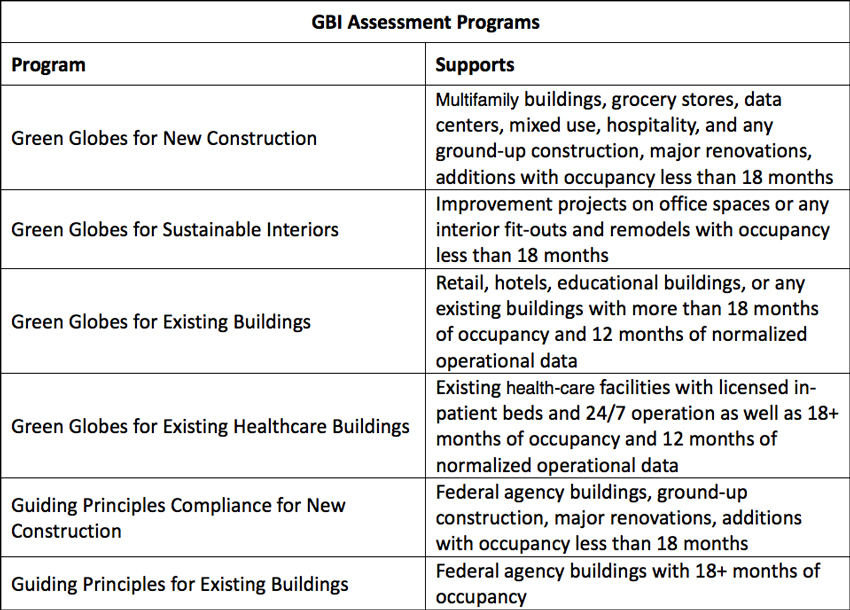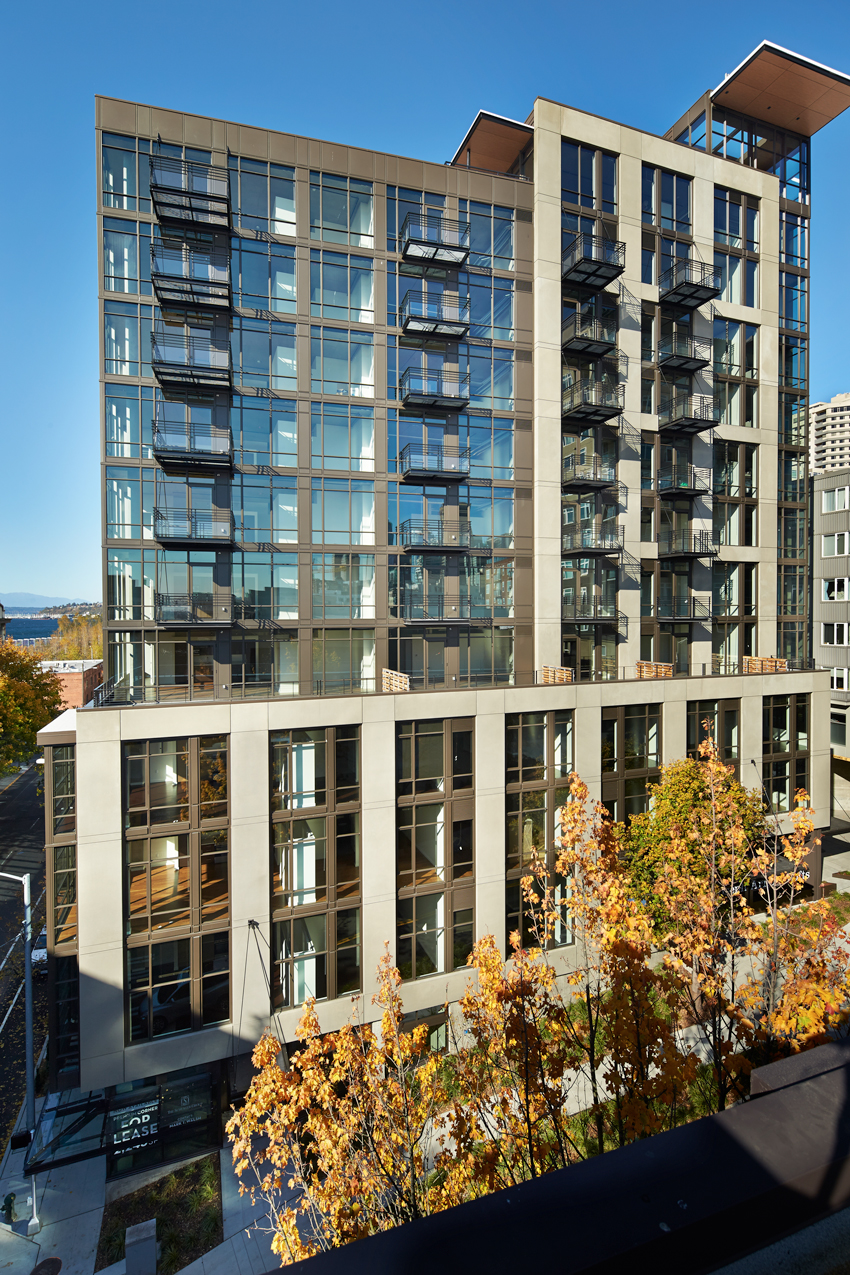Green Globes Certification Overview
Site
The Site assessment area measures the building’s ecological impacts, including how the construction process and building use will affect soil erosion, urban heat islands, light pollution, and stormwater runoff. The Site category also provides guidance and awards points for environmental enhancements, such as pervious pavements for stormwater management, vegetated roofs to combat urban heat island effect, and xeriscape landscape design and gray water irrigation systems to reduce water demand.
Water
Like the Energy assessment area, the Green Globes for New Construction Water assessment area also evaluates both performance and prescriptive criteria. The program awards points for water conservation through the integration of EPA Water Sense high-efficiency plumbing, fixtures, fittings, appliances, and equipment. Additionally, because water demand varies widely based on a building’s function, the water area contains several sections that accommodate these differences. The water section encourages consideration of opportunities for water performance improvement over a baseline. Suggestions may include alternate water sources or recycling, metering and submetering options, and water-saving irrigation design methods.
Materials and Resources
The Materials and Resources assessment area also allows the use of a performance path or prescriptive path to evaluate the project’s sustainable attributes. Furthermore, the Building Assembly (core and shell) and the Interior Fit-Out (finishes, furnishings, partitions) are assessed separately, allowing different approaches (performance or prescriptive) to be taken for each. The performance path employs life-cycle assessment (LCA), whereas the prescriptive path employs the use of EPDs or other third-party certifications. The Materials area encourages multi-attribute approaches, use of the Athena Impact Estimator, use of locally sourced materials (within 500 miles), and construction and use-phase waste reduction.
Emissions
The Emissions assessment area evaluates comprehensive heating equipment and refrigerant management practices. The section also places an increased emphasis on reducing Global Warming Potential by following the steps outlined in the EPA’s GreenChill program. GreenChill is a joint program between food retailers and the EPA to reduce refrigerant emissions and their negative impacts on the ozone layer.5
Revisions are Underway
Through revision of the ANSI/GBI 01-2010 standard, GBI is anticipating changes to the rating system that will likely include the elimination of the Emissions Assessment Area as a separate category and the additional requirement that buildings earn a minimum of 20 percent of applicable points in each of the environmental assessment areas. Other innovations include addressing owner risk issues, such as resilience and life-cycle costs.
Green Globes Certification for Existing Buildings, Interiors, and Federal Government
In addition to Green Globes for New Construction, GBI offers assessment programs for existing buildings (including health care), sustainable interiors, and federal government buildings.

Green Globes for Existing Buildings (EB) assessment involves a single review by a third-party assessor as opposed to the two separate reviews required for NC. During this review, the assessor visits the site to meet with the project team, tours the building, examines the facility management documentation and utility bills, and verifies the client’s online survey responses using all the information collected. The assessor then writes a detailed report that includes the final Green Globes score and rating as well as recommendations for future improvement as capital funds become available. This report establishes a benchmark and evaluates new opportunities for energy efficiency and overall reduction of environmental impacts. The report integrates corporate goals and practices and guides ways to improve performance.
Like Green Globes NC, the EB program is based on a 1,000-point system with no prerequisites and requires a minimum overall score of 35 percent for certification.
Green Globes for Sustainable Interiors (SI) is very similar to Green Globes NC but has a more narrow focus that is limited to the Interior Fit-Out (finishes, furnishings, partitions) of a tenant space. SI is designed to assist interior architects and interior designers in achieving their sustainability goals for a fit-out project.
GBI also offers an assessment program specifically tailored to existing healthcare facilities as well as specialized Guiding Principles Compliance programs for federal agencies to measure their compliance with Executive Order requirements. As with all GBI programs, these are designed to streamline the management and documentation process and minimize the amount of time and effort project personnel spend on the assessment process. More than 500 federal buildings have been assessed using GBI programs.












